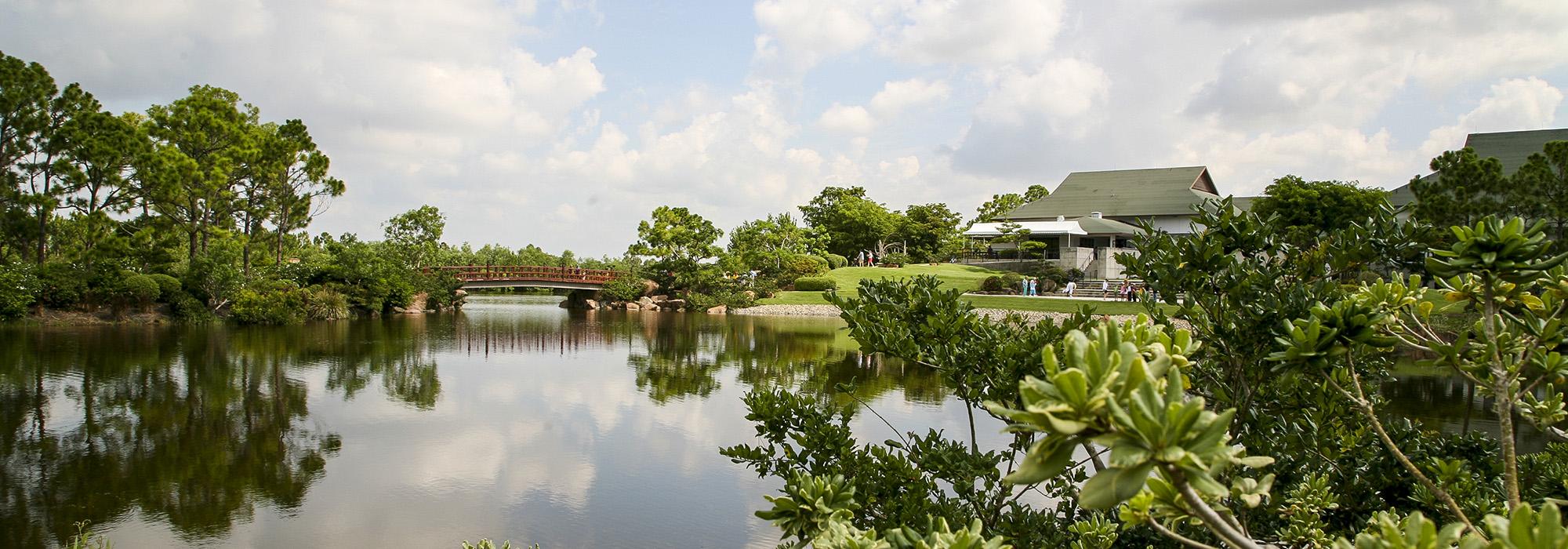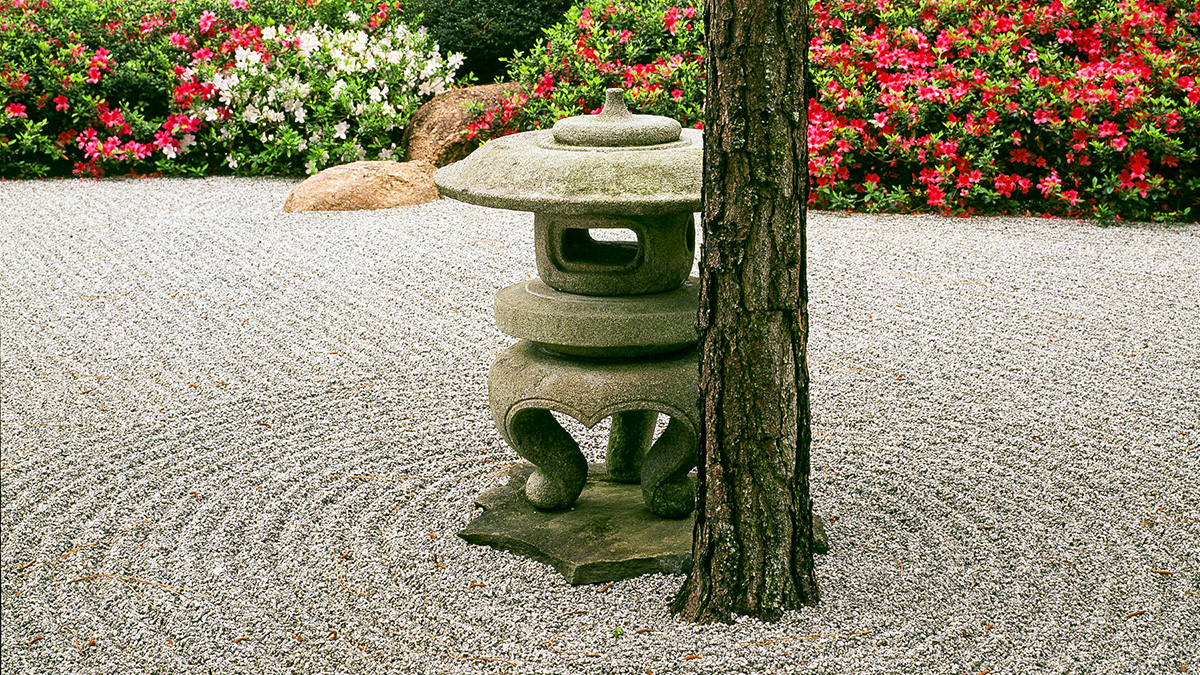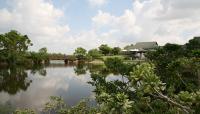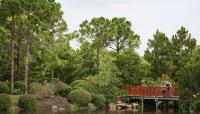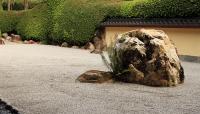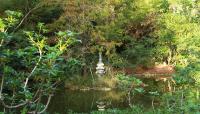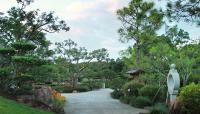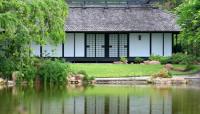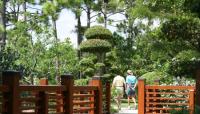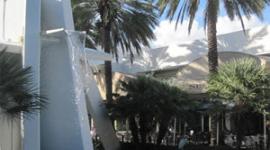First settled in 1905 by Japanese immigrants on 600 acres of land donated by the community of Boca Raton to the Yamato Colony, this garden references historic Japanese design precedents. From 1903 to the 1920s Japanese businessman Jo Sakai provided work on the East Coast Railway in Florida and Georgia for Japanese immigrants. His Yamato Colony grew pineapples and vegetables for export around the country. At the onset of World War II, few members of the Yamato Colony remained in the area and the U.S. government confiscated 6000 acres of land for a military installation. Farmer George Sukeji Morikami, the last remaining member of the colony, purchased some of the land at the end of the war where he continued the Yamato farming operation. In 1973 Morikami deeded the property to Palm Beach County who then opened the gardens to the public in 1977.
From 1999 to 2001, landscape architect Hoichi Kurisu designed six gardens at Morikami called “Roji-en: Garden of the Drops of Dew.” Representing diverse design styles from the 9th to the early 20th century, the gardens, built around a centralized pond and meandering stream, reflect Japanese traditions of nature appreciation. Bridges, lanterns, stone pagodas, and raked gravel are incorporated into artful arrangements of flowering trees, shrubs, and palms planted to frame scenic views and vistas within the garden and its surroundings. A museum building constructed in 1993, inspired by traditional tea house architecture with a lakeside terrace and courtyard garden, provides educational and interpretive exhibits.



